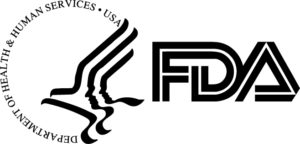 FDA recently published a guidance, Best Practices for Communication Between IND Sponsors and FDA During Drug Development. This is one of several guidances published by FDA in response to User Fee Legislation. This guidance is a joint effort by FDA’s Center for Drug Evaluation and Research (CDER) and Center for Biologics Evaluation and Research (CBER). This blog post will take a look at some of the key messages found in this guidance.
FDA recently published a guidance, Best Practices for Communication Between IND Sponsors and FDA During Drug Development. This is one of several guidances published by FDA in response to User Fee Legislation. This guidance is a joint effort by FDA’s Center for Drug Evaluation and Research (CDER) and Center for Biologics Evaluation and Research (CBER). This blog post will take a look at some of the key messages found in this guidance.
An IND is an application filed with the FDA to request permission to perform experimental human studies with an Investigational New Drug. These studies range from initial testing in a few human subjects to large-scale Phase 3 clinical trials involving hundreds or even thousands of patients. It is no surprise that there is a need for clear communication between the sponsors of INDs and the FDA.
Communication between IND sponsors and FDA – making sense of the guidance
The guidance begins by noting the Sponsor’s responsibility to “manage the overall development of their drugs (e.g., supporting well-designed and well-conducted nonclinical and clinical trials for approval while ensuring patient safety and drug quality),” and the corresponding FDA role to “ensure the safety and rights of subjects, and, during phase 2 and phase 3, to help ensure that the quality of the scientific evaluation of a drug is adequate to permit the evaluation of the drug’s effectiveness and safety.” The problem, then, is knowing the right way to communicate with FDA and, more importantly, how to understand when the Agency responds.
Requesting a meeting, and who to contact
Sponsors can request meetings with FDA at any time, but the Agency reserves the decision on whether to grant a meeting request based on the stage of a drug’s development and the availability of staff. In fact, in the same bolus of guidances released in December 2017 was one on Formal Meetings Between the FDA and Sponsors or Applicants, which we dissected in a previous post.
The key contact at FDA for sponsors is the Regulatory Project Manager (RPM) in the review division where the drug is assigned. Since the review divisions are divided up on the basis of clinical indications, it is usually possible to determine where to start. The guidance notes that the RPM is “co-leader of the FDA review team, [and so] has comprehensive knowledge of the drug and its regulatory history.”
If your question is specific to chemistry, epidemiology, or you find yourself with a serious disagreement with the Agency, it is appropriate to work through the Office of Pharmaceutical Quality (OPQ) regulatory business process managers (RBPMs), Office of Surveillance and Epidemiology safety RPMs, or CDER’s Formal Dispute Resolution Project Manager, respectively.
Contacting an FDA reviewer directly
Should you call an FDA reviewer directly? The Agency gives that idea an emphatic “No!” Why the resistance to such an attempt to cut out the middleman? The guidance states that this avoids interrupting the work of reviewers and ensures that any answers given are appropriately reviewed by Agency staff before you get them. This is a nice way of saying that individual reviewers may not have a sufficiently broad perspective to reliably provide answers consistent with FDA policy. In my opinion, as a former FDA reviewer, the Agency is justified in its position, and I would not advise trying to directly contact a reviewer. The most likely result is that you would be instructed to work through the RPM; and, consequently might seriously annoy both the reviewer and the RPM.
So, if you are not getting answers from the RPM in a timely manner, are you stuck? No. The guidance recommends that you go ahead and contact the RPM’s supervisor. This should help resolve matters.
Understanding FDA lingo: connotation vs. denotation
The guidance also talks about language. The FDA uses words like “must” or “shall” to indicate something that is required by law or regulation, and words like “may” or “recommend” when giving advice. They note that they have “the advantage of viewing the spectrum of drug development data and information across sponsors, indications, and drug classes, FDA is able to communicate advice to sponsors with that expertise in mind, while upholding commercial confidentiality.”
In practice, this means that when the FDA gives you advice, you are expected to follow it, or provide solid scientific reasoning why you did not.
Understanding the FDA, what they say, and how best to communicate with them takes practice. At Pearl Pathways, our staff has decades of experience in doing just that. We can help you understand and meet regulatory expectations so that you can get your drug, device, or diagnostic to patients quickly and successfully.
Related posts in this blog series:
